Potrebujeme váš súhlas na využitie jednotlivých dát, aby sa vám okrem iného mohli ukazovať informácie týkajúce sa vašich záujmov. Súhlas udelíte kliknutím na tlačidlo „OK“.
ASTM D945-06(2012)
Standard Test Methods for Rubber Properties in Compression or Shear (Mechanical Oscillograph)
Automaticky preložený názov:
Štandardné skúšobné metódy pre gumové Nehnuteľnosti v kompresii alebo strihanie (Mechanické oscilografy)
NORMA vydaná dňa 1.12.2012
Informácie o norme:
Označenie normy: ASTM D945-06(2012)
Poznámka: NEPLATNÁ
Dátum vydania normy: 1.12.2012
Kód tovaru: NS-39856
Počet strán: 11
Približná hmotnosť: 33 g (0.07 libier)
Krajina: Americká technická norma
Kategória: Technické normy ASTM
Kategórie - podobné normy:
Anotácia textu normy ASTM D945-06(2012) :
Keywords:
chronograph, compression, creep, deflection, deformation, dynamic modulus, elevated temperature, hysterisis, initial creep, kinetic energy, low temperature, mechanical oscillograph, point modulus, resilience, set, shear, static modulus, strain, stress, subnormal temperature, tangent modulus, Yerzley, ICS Number Code 83.060 (Rubber)
Doplňujúce informácie
| Significance and Use | ||||||||
|
5.1 The rubber properties that are measurable by these test methods are important for the isolation and absorption of shock and vibration. These properties may be used for quality control, development and research. 5.2 Measurements in compression are influenced by specimen shape. This shape factor may be described as the ratio of the loaded surface area to the unloaded surface area. In applying data from a compression specimen, shape factor must be incorporated into the mathematical transferal to the application. |
||||||||
| 1. Scope | ||||||||
|
1.1 These test methods cover the use of the Yerzley mechanical oscillograph for measuring mechanical properties of rubber vulcanizates in the generally small range of deformation that characterizes many technical applications. These properties include resilience, dynamic modulus, static modulus, kinetic energy, creep, and set under a given force. Measurements in compression and shear are described.2,3 1.2 The test is applicable primarily, but not exclusively, to materials having static moduli at the test temperature such that forces below 2 MPa (280 psi) in compression or 1 MPa (140 psi) in shear will produce 20 % deformation, and having resilience such that at least three complete cycles are produced when obtaining the damped oscillatory curve. The range may be extended, however, by use of supplementary masses and refined methods of analysis. Materials may be compared either under comparable mean stress or mean strain conditions. 1.3 The values stated in SI units are to be regarded as the standard. The values given in parentheses are for information only. 1.4 This standard does not
purport to address all of the safety concerns, if any, associated
with its use. It is the responsibility of the user of this standard
to establish appropriate safety and health practices and determine
the applicability of regulatory limitations prior to use.
Standard Practice for Rubber Conditioning
For Low Temperature Testing Recommended Practice for Classifying
Elastomeric Compounds for Resilient Automotive Mountings (Withdrawn
1971) SAE J16 Classification of Elastomer Compounds for
Automotive Resilient Mountings Available from Society of Automotive
Engineers, 400 Commonwealth Drive, Warrendale, PA 15096., The
Yerzley oscillograph was originally described in detail in the
paper by Yerzley, F. L., A Mechanical Oscillograph for Routine
Tests of Rubber and Rubber-Like Materials, Proceedings, ASTM, Vol
39, 1939, p. 1180; also Rubber Chemistry and Technology, Vol XIII,
No. 1, January 1940, p. 149. Standard Practice for Evaluating
Precision for Test Method Standards in the Rubber and Carbon Black
Manufacturing Industries |
Podobné normy:
Historická
1.11.2013
Historická
1.1.2012
Historická
1.6.2010
Historická
1.5.2010
Historická
1.11.2011
Historická
1.11.2011


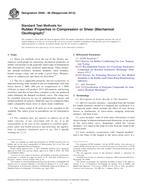
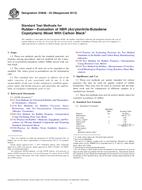 ASTM D3848-03(2013)..
ASTM D3848-03(2013).. ASTM D3853-12
ASTM D3853-12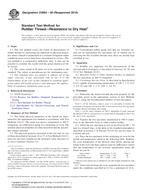 ASTM D3854-90(2010)..
ASTM D3854-90(2010)..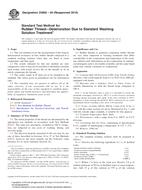 ASTM D3855-84(2010)..
ASTM D3855-84(2010)..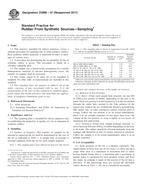 ASTM D3896-07(2011)..
ASTM D3896-07(2011)..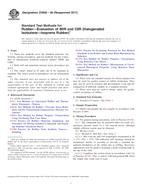 ASTM D3958-06(2011)..
ASTM D3958-06(2011)..
 Cookies
Cookies
